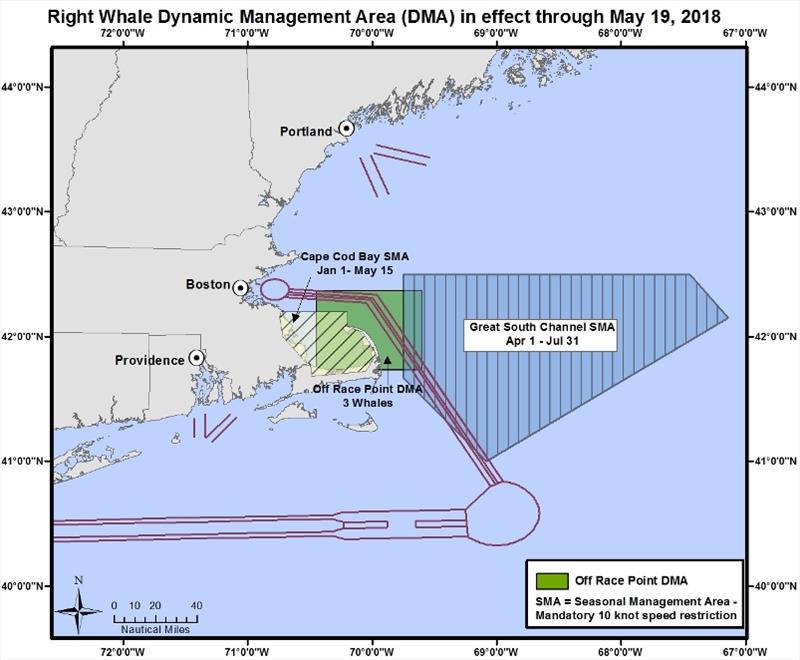
New voluntary slow speed zone to protect right whales off Race Point
by NOAA Fisheries 10 May 2018 13:56 UTC

New voluntary slow speed zone to protect right whales off Race Point © NOAA Fisheries
NOAA Fisheries announces that the voluntary vessel speed restriction zone (Dynamic Management Area or DMA) has been established to protect a group of three right whales sighted east of Race Point, Provincetown, Massachusetts on May 5.
Voluntary Dynamic Management Areas (DMAs)
Mariners are requested to avoid or transit at 10 knots or less inside the following areas where persistent aggregations of right whales have been sighted. Find out more about ship strike reduction efforts.
East of Race Point -- In effect through May 19.
42 22 N
41 44 N
070 27 W
069 36 W
There is also an active voluntary slow speed zone south of Martha's Vineyard through May 9, and two active voluntary slow speed zones east of Boston in effect through mid-May.
Active Seasonal Management Areas (SMAs)
Mandatory speed restrictions of 10 knots or less (50 CFR 224.105) are in effect in the following areas:
- Cape Cod Bay SMA in effect through May 15
- Great South Channel in effect through July 31
Right Whales in crisis
The year 2017 was devastating for North Atlantic right whales, which suffered a loss of 17 whales--about 4 percent of their population--an alarming number for such a critically endangered species with a population currently estimated at about 450 animals.
In August 2017, NOAA Fisheries declared the increase in right whale mortalities an "Unusual Mortality Event," which helps the agency direct additional scientific and financial resources to investigating, understanding, and reducing the mortalities in partnership with the Marine Mammal Stranding Network, Canada's Department of Fisheries and Oceans, and outside experts from the scientific research community.
On January 22, the first right whale mortality of 2018 was spotted off the Virginia coast.
More Information:
Recent right whale sightings
Download the Whale Alert app for iPad and iPhone
Acoustic detections in Cape Cod Bay and the Boston TSS
Send a blank message to receive a return email listing all current U.S. DMAs and SMAs.
Details and graphics of all ship strike management zones currently in effect.
Reminder: Approaching a right whale closer than 500 yards in a violation of federal and state law.
Please report all right whale sightings to 866-755-NOAA (6622).
Questions? Contact Jennifer Goebel, Regional Office, at 978-281-9175